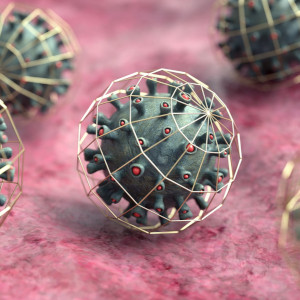
The human organism is inhabited by a multitude of microorganisms. If we imagine that ninety percent of the cells predominating in the human body are not of human origin, that our human body consists of about 10 trillion cells, and that only in the lower intestinal tract there are about 100 trillion bacteria or single-celled plant organisms, then we have an approximate idea of what happens in our body every day.
The microorganisms located in the intestinal tract are usually effective microorganisms that the body can hardly do without.
However, our body is also exposed daily to attacks by viruses and bacteria, which have the aim of weakening or damaging the human organism.
In the field of anti-infective electromedicine, we distinguish between 3 different electromedical procedures to combat these pathogens:
- Current induction procedures
- Frequency procedures
- Induction of strong magnetic pulses
Current induction method
The current induction method attempts to influence a relatively small area of the body, usually the passing blood.
The current voltage used should be so strong that it can almost be described as allopathic, but the body's own signals should not be superimposed.
The current flow induced into the blood aims to depolarise the membrane potentials of the pathogens in the blood plasma. In the course of this depolarisation, the outer protein layer is rendered useless, thus preventing the pathogens from docking with organismic cells.
The current flow also affects the red blood cells. These, however, survive the effect of the current well, as they are much more robust in electrophysiological terms.
The current induction procedure can be found in practical application in the Beck blood zapper by Dr. Robert Beck. However, Dr. Beck himself based his knowledge or theory of blood electrification on the US patent 5,188,738 by Dr. Kaali from 1993.
The Beck generator from our online shop works according to this principle.
Frequency method
In the frequency method, the current flow is conducted through a larger area of the body, either via hand or foot electrodes. This method relies on an intensive interaction of biological (cell membranes, cell communication, etc.) and technically induced electrical fields.
Since the entire organism is exposed to a diffused current voltage, all bioelectrical life processes are influenced.
Primarily, the permeability of the membrane channels of all cells is decisively increased by the general electromagnetic field, which leads to an increased permeability and thus to an increased metabolic rate.
All approaches of Nicola Tesla, Georges Lakhovsky, Royal Rife and Hulda Clark belong to the principle of the frequency method.
Therapeutically, according to the resonance principle, the parasite's own frequency is used to destroy the respective pathogen species. However, this presupposes that the exact frequency can also be determined and can then consequently also be conducted by the frequency therapy device into the body in an exact setting.
If the exact frequency cannot be determined, or if the procedure appears to be too time-consuming, the frequency 33 kHz can also be used in the frequency therapy procedure, which, according to research results, causes difficulties for most parasites.
It has to be taken into consideration in the frequency method that the current conducted into the body does not always arrive where it is supposed to work. In such cases (e.g. intestines, bones, etc.), the frequency procedure must be carried out using plasma therapy devices.
Induction of strong magnetic pulses
For the induction of strong magnetic impulses, a so-called magnetic pulsar is used.
As the magnetic impulse penetrates the body, electric vortex fields are created which, analogous to the low current induced into the bloodstream, are sufficient to devitalise microorganisms.
This form of anti-infective electromedicine is also recommended by Dr. Robert Beck in addition to the Beck blood zapper, since pathogens can also settle outside the bloodstream and thus cannot be reached with the blood zapper alone.
An example:
There are germ forms in the lymph nodes that only enter the bloodstream at a later stage. The blood zapper would not reach these at the current time. Through treatment with magnetic impulses, these germ forms are devitalised in advance, i.e. in the lymph nodes, and disposed of as "protein waste".
